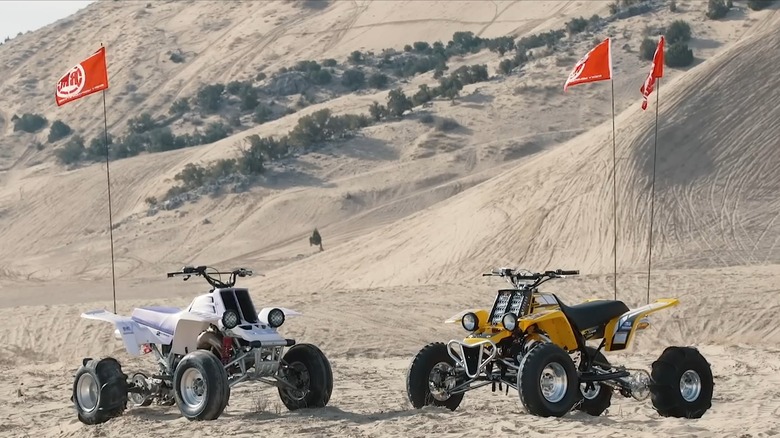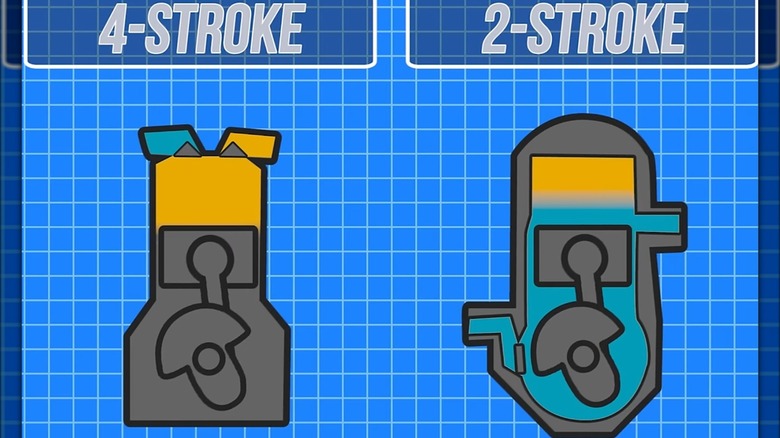Why Did Yamaha Discontinue The Banshee ATV And Which Was The Last Production Year?
One of the most legendary ATV models to ever hit production, the Banshee gave off-roaders something other quads weren't offering at the time, power. In the late '80s, while other manufacturers were releasing modestly powered ATVs, Yamaha decided to adapt their robust RZ 350 motorcycle engine for use in their Banshee quad. With a brawny two-stroke motor, the Banshee is quick, reaching a top speed of up to 74 mph and can easily be modified to produce even more power. The last iteration of the Banshee offered a 347cc two-stroke engine and meaty 21-inch front and 20-inch rear tires for an ideal way to conquer sand dunes among other rugged terrain.
While popular in the off-road community, the Banshee was quietly discontinued in the U.S. in 2006 after almost two decades of production due to tightening emission regulations. It was also likely that after introducing both the Raptor and YFZ450R in the early 2000s, the Banshee was seen as a less attractive sport quad option. In fact, one of the best Yamaha Raptor years occurred with the 660 released in 2001. In retrospect, some previous owners recount how this ATV is fast on a straightaway, but tended to need regular "wrenching," so it requires riders who are mechanically inclined. You can still find used Banshees for sale starting at around $7,000.
A change from two-stroke to four-stroke
A four-stroke engine goes through four stages during combustion producing a power stroke, an exhaust stroke, an intake stroke, and finally a compression stroke. The two-stroke engine equipped Banshee features a much more condensed combustion cycle combining both the power and exhaust stroke and the intake and compression stroke together. Two-stroke engines were popular because they aren't as complex to repair, they offer a unique sound, and most importantly, they redline at a much higher RPM making them powerful. So why was there a push for manufacturers to adopt four stroke engines over two strokes in the early 2000s?
Environmental regulations have steadily been tightening ever since the clean air act of 1970, which "authorized the development of comprehensive federal and state regulations to limit emissions from both stationary (industrial) sources and mobile sources." A four-stroke engine is more efficient than its two-stroke counterpart because fuel is burned every four strokes versus every two. Two-stroke engines also emit burnt oil fumes on top of other pollutants from the exhaust, making the four-stroke more environmentally friendly. Even though the Banshee is no longer being made, other options like the Yamaha YFZ450R sport ATV offer plenty of power with a 449cc four-stroke engine and cutting-edge technology. Though, you may want to incorporate a neat WD-40 dirt track trick before a ride to ensure your sport quad continues looking its best.

